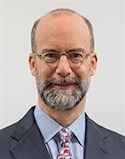Wi-Fi health advocates are furious at FCC threats to force local communities to allow new “5G” Wi-Fi transmitters on utility and light poles.
 The wireless industry is “losing patience with municipalities it sees as obstructionist,” says a report by the National Assn. of Telecommunications Officers and Advisors.
The wireless industry is “losing patience with municipalities it sees as obstructionist,” says a report by the National Assn. of Telecommunications Officers and Advisors.
The 1996 Telecom Act says that “No state or local government may regulate the placement, construction or modification of personal wireless service facilities on the basis of environmental effects of radio frequency emissions.”
Since 5G (fifth generation) transmitters can carry more information but only travel short distances and cannot go through walls, millions of such transmitters will be needed.
|
|
 “Distributed Antennae Systems, commonly referred to as DAS but more properly considered: Dangerous And Stupid, are the equivalent of a toxic chicken in every pot,” said Ed Friedman, spokesperson for the Maine Coalition to Stop Smart Meters.
“Distributed Antennae Systems, commonly referred to as DAS but more properly considered: Dangerous And Stupid, are the equivalent of a toxic chicken in every pot,” said Ed Friedman, spokesperson for the Maine Coalition to Stop Smart Meters.
“DAS brings high density antenna networks emitting permeating and polluting radiofrequency radiation, a likely human carcinogen, to a room near you,” he said. “Escape from this poisoning will be virtually impossible. DAS proliferation plans confirm smart is the new stupid.”
“You can’t deny wireless service under the Telecom Act,” said Jonathan Adelstein, former FCC commissioner who heads the Wireless Infrastructure Assn. Healthcare advocates have been seeking to have the law overturned.
Tony Perez, immediate past president, NATOA, said the public “needs to be educated more” about the benefits of 5G. He called for a “frank, open dialogue.” He said most cities have cooperated with the wireless industry and, “We don’t see a need for broad federal pre-emption of what has traditionally been the regulatory purview of local communities.”
Wi-Fi Compared to Smoking
Ecologist Lynn Wycherley says “Evidence is emerging that the health hazards associated with wireless microwaves are at least comparable to, if not worse, than those associated with cigarette smoking.”
Her extensively documented article blasting the U.K.’s Digital Economy Bill, including criticism of FCC Chairman Tom Wheeler for proposing “unbridled massive deployment” of the new and more powerful 5G transmitters, was published by The Ecologist.
Writes Wycherley: “Anticipating ‘tens of billions of dollars’ of economic growth, with U.S. telecoms ‘first out of the gate’, Wheeler warned: ‘Stay out of the way of technological development! Turning innovation loose is far preferable to expecting … regulators to define the future.’”
She charges that the July 14, 2016 adoption of 5G technology by the FCC made no mention of health-testing, carbon costs, or corporate responsibility. The Wycherley article has links to 14 scientific studies and papers on EMF.
“The FCC voted unanimously to go ahead by releasing swathes of untested high frequencies for private sector exploitation – so setting a trend,” she said. She asked, “How will our communities be affected by addiction to 5G multi-stream videos? How will it impact our spiritual communion with Nature?”
Many American health activists, and cautioning scientists, are aghast, said Wycherley, noting that Joel Moskowitz, Ph.D., director of community health studies at the University of California, warns “precaution is warranted before 5G is unleashed on the world.”
“Drowning in Microwaves”
She quotes geneticist Dr. Mae-Wah Ho whose paper “Drowning in a Sea of Microwaves” called pollution from wireless technologies a “pressing issue of our times.”
Anthropogenic radiation has “sky-rocketed” with the advent of radar, cellphones and “dense Wi-Fi networks,” says Wycherly.
“Although it is non-ionising and does not destabilize molecules directly, evidence of other harm has been growing since the 1950s studies on radar workers.”
“But wireless-product marketing has a loud voice. Few of us realize that genetic effects and free radical damage—both disease risks over time—are the most common, cautionary findings. Device-crowded spaces, such as our peak commuter trains and all-wireless classrooms, may be creating a subtly toxic environment.”
An illustrated version of the Wycherley essay was published by Global Research, Canada.
Moskowitz Adds Links
Moskowitz has added links to eight studies in commenting on Wycherley’s essay.
Included is a study on cellphones and radiation health threats and one on an increase in brain cancers link to an increase in cellphone use.



 Lo Isidro, senior director at Real Chemistry with more than a decade of strategic communications and PA experience, has joined Narrative Strategies.
Lo Isidro, senior director at Real Chemistry with more than a decade of strategic communications and PA experience, has joined Narrative Strategies. Nelson Fernandez, former North American chair of APCO Worldwide and managing director of Burson-Marsteller, has joined Volunteers in Medicine Berkshires as director of communications and PA.
Nelson Fernandez, former North American chair of APCO Worldwide and managing director of Burson-Marsteller, has joined Volunteers in Medicine Berkshires as director of communications and PA. Lilit Bargar, who was most recently an EVP in the healthcare practice at Weber Shandwick, comes on board at GCI Health as EVP, corporate practice lead.
Lilit Bargar, who was most recently an EVP in the healthcare practice at Weber Shandwick, comes on board at GCI Health as EVP, corporate practice lead.
 Five ways that successful thought leaders are made.
Five ways that successful thought leaders are made.


 Have a comment? Send it to
Have a comment? Send it to 
No comments have been submitted for this story yet.